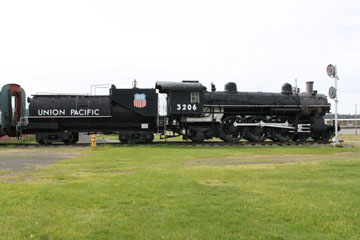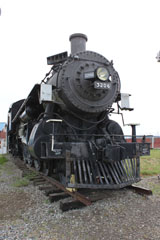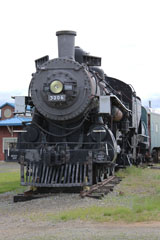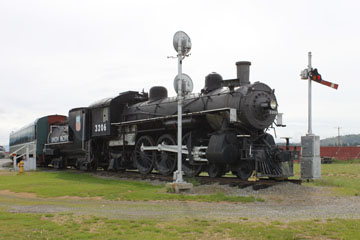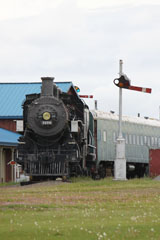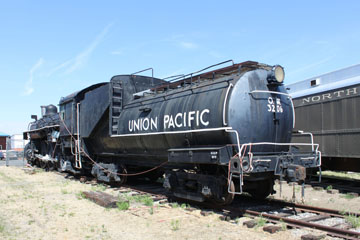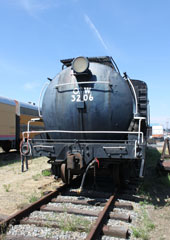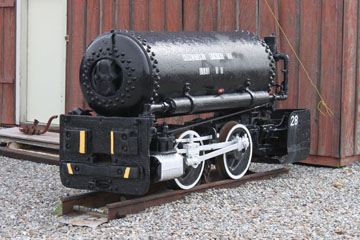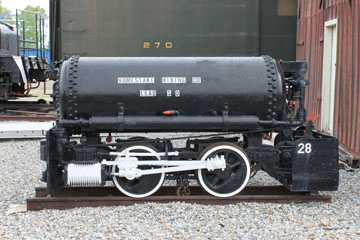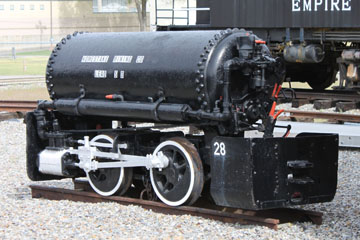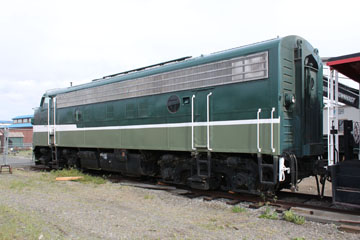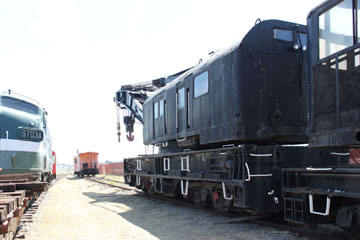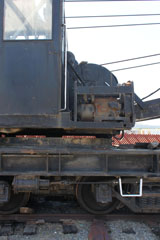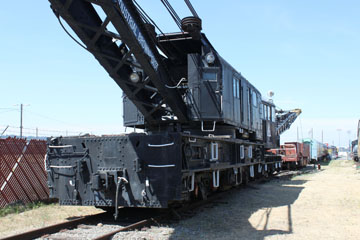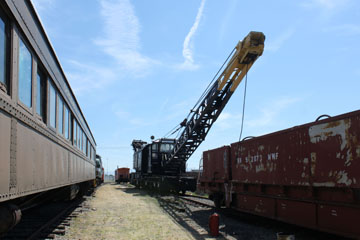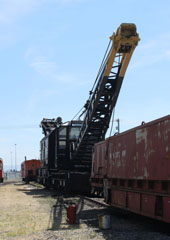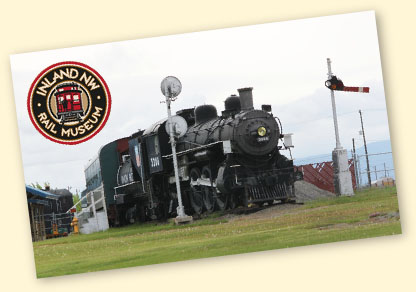

The Inland NW Rail Museum grew from a group of railfans who formed a local chapter of the National Railway Historical Society in 1967 and named it the Inland Empire Railway Historical Society.
The Society’s first major project in 1970 was cleaning and painting Union Pacific #3206 then on display in Highbridge Park in Spokane, WA. #3206 was the first piece of equipment moved to the museum's newly leased site at the Spokane Interstate Fairgrounds in 1978. Since then, the collection has become an eclectic mix of rail cars and engines, railroad memorabilia and a library aimed at preserving the history of railroading in the Inland Northwest for future generations.
In 2002, the Society was given an eviction notice and was forced to seek a new site for the museum. When I last visited, it was still at the Fairgrounds but was already working on a new site in Reardon, WA. In 2011, the organisation was renamed the Inland Northwest Rail Museum to more accurately reflect its objectives. The Inland Northwest, or Inland Empire, is a region in the Pacific Northwest centred on Spokane, WA, and including the surrounding Columbia River basin and all of North Idaho.

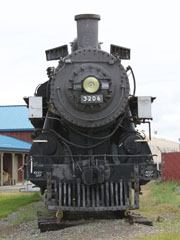
#3206 was built as #192 by the Schenectady Locomotive Works (later part of Alco) and was
one of four high drivered Light Pacific type (4-6-2) P-1 Class locomotives delivered to the Union Pacific subsidiary the Oregon Railroad & Navigation Co.,
(#190-#193) in August 1904.
This so called “Common Standard” Light Pacific was one of four types of steam engine design developed by the Associated Railroads, and significant numbers were built for the Union Pacific and its subsidiaries between 1903 and 1911 by all the major locomotive manufacturers.
The Associated Railroads comprised the Southern Pacific, Chicago & Alton and the Union Pacific and its affiliates the Oregon Short Line and the Oregon-Washington Railroad & Navigation Co., which were combined under one management in 1902 by E. H. Harriman.
Harriman, Chairman of Union Pacific's Executive Committee from 1898 until he died in 1909, saw the benefit of standardising designs, and many bridges, cars and locomotives were built to a “Common Standard” for all five railroads during this period.
#3206 was officially retired in 1954 and, the following year, was donated to the City of Spokane where it went on display in High Bridge Park. In 1978, the locomotive was deeded to the IERHS and moved to the fairgrounds. It was last steamed at 100 psi in 1980 during the Spokane County Fair where its whistle was reported to have spooked the livestock exhibited at the fair. The museum plans to restore the locomotive as funding becomes available.
Last time I visited, #3206 had been moved back into the yard ready to be transported to Reardon.
#192 was renumbered #3206 in 1915 and was then leased to the Union Pacific in 1936, where it retained its number. The locomotive then spent most of its working life on passenger service on Union Pacific branch lines in Eastern Washington and Northern Idaho.
#3206 weighs 220,300 lbs, 130,300 lbs on its 77” drivers. It has 22” x 28” cylinders. With a 49.5 sq ft grate, 202 sq ft firebox, including 28 sq ft of arch tubes, and a total heating surface of 3,048 sq ft, it operated at a boiler pressure of 200 psi delivering 29,920 lbs tractive effort.

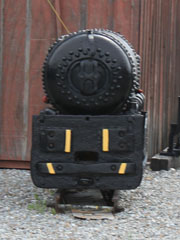
H. K. Porter in Pittsburgh, PA, built this diminutive 18” gauge
0-4-0CA (Compressed Air) engine in 1910 for the Homestake Mining Company in Lead, SD. It has 6” x 10” cylinders.
Compressed air was a suitable form of power for mining equipment because it produced no noxious fumes or damp-causing steam.
The Homestake deposit was discovered by Fred and Moses Manuel, Alex Engh and Hank Harney in April 1876, during the Black Hills Gold Rush. The mine finally ceased production at the end of 2001 as a result of low gold prices, poor ore quality and high costs.


This 45 ton, 500 volt DC electric locomotive was built in 1901 by a partnership of the Baldwin Locomotive Works (body and running gear) and Westinghouse Electric (electrical systems) for the Great Falls Smelter Railway, then owned by the Boston & Montana Consolidated Copper and Silver Mining Co.
L-451 drew power from a third rail. The red brackets on the side of the two trucks originally had shoes that drew power from the third rail laid outside the wheel-bearing rail. A similar system is still in use today on much of the metropolitan transport system in London.
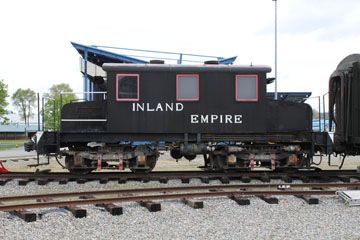

Smelting operations began at Great Falls, MT, in 1893 when copper ore from mines in Butte, MT, began to be concentrated, smelted and refined into blister copper. In 1910, the refinery was bought by the Anaconda Copper Mining Co., and renamed the Great Falls Reduction Department.
L-451 was one of many locomotives bought by scrap dealer Maurice Weissman of Great Falls, MT, when the smelter closed in 1980. It has been painted to simulate the electric switch engine that saw service on the Inland Empire System in Spokane and numbered #502.

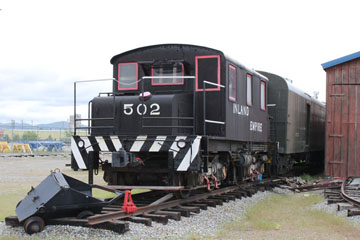

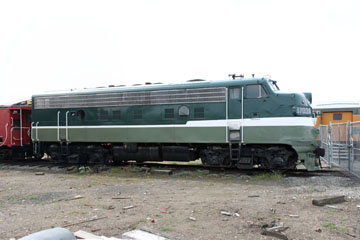
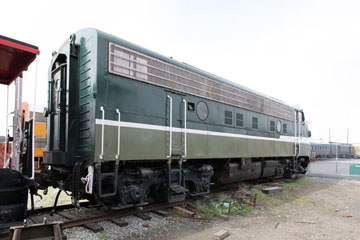
This F9 locomotive was built in 1956 by EMD as Northern Pacific #7010D, one of a four unit set intended for freight service. The NP bought its first F9 units in 1954, which were assigned to the climb through Bozeman Pass between Livingston and Bozeman, MT. The NP eventually rostered thirty A units (#7000A,D–#7014A,D) and thirty cabless B units (#7000B,C–#7014B,C).
An additional eight A units (#6700A,C–#6701A,C; #6702A–#6704A & #6500C) and two B units (#6700B–#6701B) were bought for passenger service.
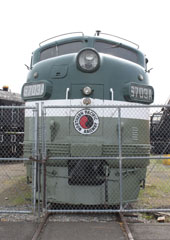
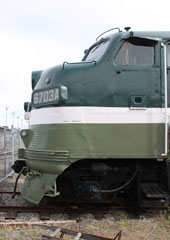

In the mid 1960s, the NP needed more passenger locomotives but, by then, the F9 was no longer available to buy new. The NP therefore decided to convert #7010D by adding a steam heat boiler. Because there was no room for a water tank, however, piping had to be added to draw water from other units or from a tank in the baggage car. The unit was renumbered #6703A.
After the 1970 Burlington Northern merger, the unit was renumbered #9812. It was again converted to freight service with the removal of the steam boiler and became BN #778.
#778’s last revenue freight service was in 1981, and it was last used as a power car for a rotary snowplow in Staples, MN. It was donated to the museum in 1986.
#6703A is 50' 8” long and weighs 230,000 lbs. A Winton 567C 16 cylinder prime mover drove a
1,750 hp GM D12D Generator to power four GM D37 traction motors delivering 40,000 lbs continuous tractive effort at 9.3 mph with a top speed of 65 mph. You can also see BN F9 BN-1 and BN-2 on the Illinois Railway Museum Yard page of this website.

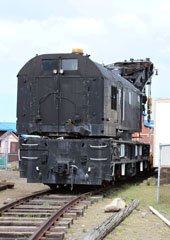
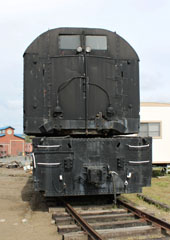

Built in 1942 by Industrial Brownhoist, this wrecking crane weighs 390,000 pounds with a lifting capacity of 250 tons. Built as NP #45 and originally steam powered, it was converted to diesel with a Caterpillar D-8 industrial engine in 1957. Based in Spokane, WA, it became Burlington Northern #972005 in 1971 and, later, D2510. It was acquired by the museum in 2002.
Industrial Brownhoist began as Industrial Works in 1873, primarily repairing equipment and supplying saws, engines and boilers for the many local sawmills and shipbuilders around Bay City.
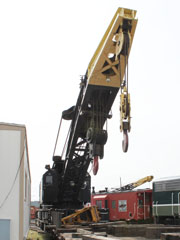
The firm built its first crane for the Chicago & Western Illinois Railroad in 1883 and went on to become a major producer of cranes. In 1931, it combined with the Brown Hoisting Company of Cleveland, OH, (established in 1880) to form Industrial Brownhoist.
There are other
Industrial Brownhoist cranes on the Nevada Northern Railroad Museum page of this website, the Ogden Union Station, Gold Coast Railroad Museum, Monticello Railway Museum, Pennsylvania Railroad Museum Yard and Virginia Museum of Transportation pages.

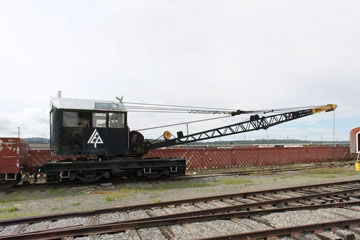


This self-propelled diesel powered crane was
used to unload, deck, reload and move log cars at the Inland Empire Paper Company, a specialist paper product manufacturer based in Millwood, WA. Although the museum website says it was built in 1956 by Wellman Engineering Co., the crane bears a Browning nameplate on the front of the boom.
Based at various stages in Willoughby, OH, and Cleveland, OH, the Browning Engineering Co., began manufacturing cranes in the 1900s and operated under various different names.


